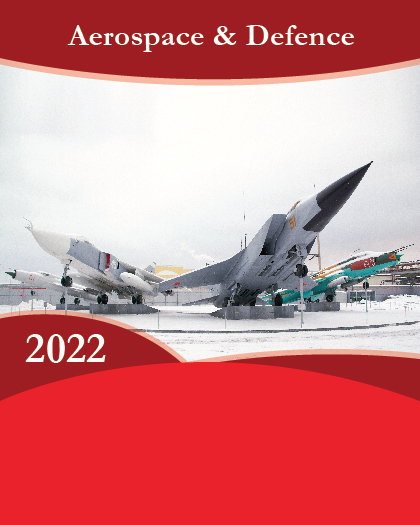
Small satellites are spacecraft with a mass less than 500 kg, and are used to conduct missions beyond low Earth orbit (LEO). They are miniaturized versions of heavy satellites with reduced mass and building complexities. Small satellites are categorized into minisatellites (mass of 100-500 kg), microsatellites (10-100 kg), and nanosatellites (1-10 kg). Small satellites are used in various applications such as Earth observation, telecommunication, technology demonstration, and scientific research & experimentation. Their use has increased significantly in the commercial sector owing to rise in adoption by small & medium enterprises.
The global small satellite market has witnessed significant growth in the recent years, owing to the increase in demand of Earth observation services. High-resolution imaging services are used to monitor assets by various industries such as defense, energy, oil & gas, media & entertainment, and others. Decreasing costs, reduced weight, and lesser complexities associated with small satellites along with supply of enhanced power and efficiency have supplemented the growth of the small satellite market. Technological advancements and increase in government investments in small satellites are expected to further drive the small satellite industry growth. However, lack of dedicated launch vehicles for small satellites is expected to restrict the growth of the small satellite market. Rise in number of application areas of small satellites and growth in demand in emerging economies of Asia-Pacific and LAMEA are anticipated to provide numerous growth opportunities in the future. Asia-Pacific is one of the prominent geographical regions that is rapidly adopting small satellites for Earth observation services, due to the increasing natural disasters, growth in the agricultural sector, and high government investment in the defense sector. Images obtained by the satellite are used for land distribution, rescue work, natural resource management, environmental protection, disaster prevention, forestry, and others.
Several developments by players in the global small satellite market and governments worldwide have supplemented the growth of the market. NASA is in a process to establish a Small Spacecraft Virtual Institute at Ames Research Center by 2017 to promote technical knowledge related to small spacecraft technology fields. It will also promote relevant programs, guidance, and opportunities associated to smallsat missions. The National Geospatial-Intelligence Agency (NGA) has awarded a contract worth $20 million to Planet Labs, a startup involved in developing a constellation of imagery smallsats in LEO. This contract will enable NGA to acquire high-resolution imagery for augmenting higher resolution capabilities, environmental monitoring, and change detection. In September 2016, the National Oceanic and Atmospheric Administration (NOAA) awarded contracts to GeoOptics, Inc. and Spire Global, Inc., major smallsat-constellation operators in the small satellite industry. These contracts will enable NOAA to gain access to space-based, radio-occultation data to deliver high-quality and accurate weather forecasts and warnings. In January 2015, Fidelity and Google invested $1 billion in SpaceX to enable the company to develop its own constellation of Internet-beaming satellites. In the same month, OneWeb announced that it would develop a constellation of 648 smallsats with capability of supplying Internet to points on the ground below, which is set to be launched by 2018. Boeing is collaborating with SpaceX and OneWeb to launch a constellation of hundreds of small satellites into LEO to expand broadband access. The launch of around 3,000 satellites into the LEO would be possible after the acquisition of license from the U.S. Federal Communications Commission (FCC), which was applied in June 2016.
The global small satellite market is segmented into type, application, end user, and geography. Based on type, the market is divided into minisatellites, microsatellites, and nanosatellites. Based on application, it is classified into Earth observation, telecommunication, scientific research & experimentation, and technology demonstration. On the basis of end user, it is categorized into defense, commercial, civil, and government. Geographically, it is analyzed across North America, Europe, Asia-Pacific, and LAMEA.
KEY BENEFITS
This report provides an in-depth analysis of the global small satellite market to identify the potential investment pockets.
It outlines the current trends and future scenario of the global small satellite market from 2016 to 2022 to understand the prevailing opportunities and investment pockets.
The key drivers, restraints, and opportunities along with their detailed impact analyses have been elucidated.
Porter's Five Forces model analysis illustrates the impact of factors such as threat of new entrants, threat of substitutes, strength of the buyers, and strength of suppliers on the small satellite industry growth.
The quantitative analysis of the global small satellite market size from 2014 to 2022 is provided in the report to elaborate the market potential.
KEY MARKET SEGMENTS
The small satellite market is segmented on the basis of type, application, end user, and geography.
BY TYPE
Minisatellites
Microsatellites
Nanosatellites
BY APPLICATION
Earth Observation
Telecommunication
Scientific Research & Experimentation
Technology Demonstration
BY END USER
Civil
Defense
Commercial
Government
BY GEOGRAPHY
North America
U.S.
Canada
Mexico
Europe
UK
Germany
France
Rest of Europe
Asia-Pacific
China
Japan
India
Rest of Asia-Pacific
LAMEA
Latin America
Middle East
Africa
KEY MARKET PLAYERS
Sierra Nevada Corporation
Lockheed Martin Corporation
Airbus Defense and Space
Northrop Grumman Corporation
Harris Corporation
Aerospace Corporation
Planet Labs Inc.
The Boeing Company
Surrey Satellite Technology Ltd.
Thales Group
OTHER COMPANIES MENTIONED IN THE REPORT:
GeoOptics, Inc., Spire Global, Inc., Fidelity Investments, OneWeb LLC, SpaceX (Space Exploration Technologies Corporation), Skybox Imaging (Terra Bella), Dauria Aerospace, BlackSky Global LLC, Satellogic, DigitalGlobe, Inc., O3b Networks, Ltd., Clyde Space Ltd., GomSpace ApS, Avio Spa
























